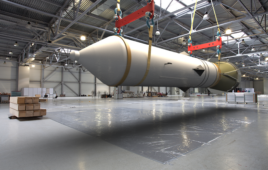Approved aftermarket components are needed in every industry. Here is a product specific to Boeing. Within the Boeing 747 aircraft galley are two separate water heaters, each with their own unique power requirements, supplied by a common busbar. To prevent overloads caused by simultaneous operation of both water heaters, the AAC S1028 ac current level detector is used to prioritize operation by the higher-load water heater, effectively “locking out” the second water heater while the first is in use.

The DO-160E qualified Model S1028 Series ac current level detectors were recently specified for aftermarket use on the Boeing 747 by several major European carriers, in direct support of aircraft galley water heater upgrade requirements.
The AAC S1028 series AC Current Level Detector specified for this application has an operating range from 0–250 Amps ac, a frequency range of 360–650 Hz, and operates from a 28 Vdc nominal supply voltage. The detector provides an SPST output relay for currents at or above trip point and customers can select the desired trip point in 1 Amp increments from 1–250 Amps ac, depending on the product number. The Series design builds upon the success of the company’s model S979 Series, adding an enlarged aperture from 0.50 in. to 1.00 in. in diameter, with model variation flexibility to support different trip points. Both sensors are qualified to the same DO-160E environmental specification for temperature and altitude, temperature variations, humidity, shock and crash safety; are explosion-proof, waterproof, sand and dust and mold resistant.; are designed with capability to withstand salt fog and icing conditions and fire flammability; and are immunity to electromagnetic effects, extraneous power inputs, power or voltage spikes, lighting induced transients, and electrostatic discharge. Units are also audio frequency conducted, and feature induced RF signal susceptibility, RF susceptibility and emission.
American Aerospace Controls
www.a-a-c.com
Filed Under: Aerospace + defense, MORE INDUSTRIES, ELECTRONICS • ELECTRICAL





Tell Us What You Think!